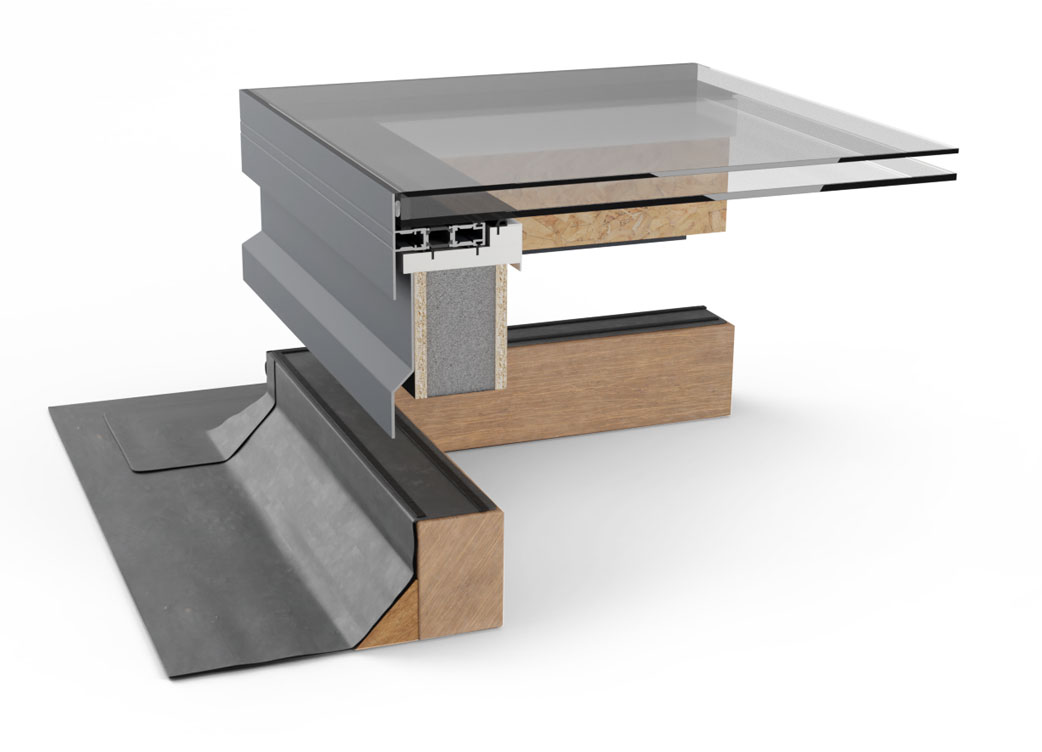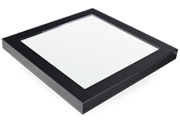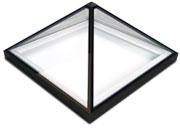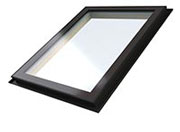Choosing Safe And Secure Glass For Your Rooflights
When it comes to installing rooflights in your home, safety is paramount. The perfect choice should be a blend of contemporary design, thermal efficiency, safety and security.
The glass used in manufacture is the best indicator for safety levels so it is essential that you choose the right kind of glass for your rooflight.
In order to ensure your utmost safety, the ideal specification should include a double glazed unit with an outer toughened pane and an inner panel of heat strengthened laminated glass.

In fact there are many reasons why a combination of both toughened and laminated glass is the preferable choice when it comes to rooflights. Let’s take a look at the pros and cons of each type of glass below.
Toughened
The variation in cooling rates creates compressive and tensile stresses. These counteracting stresses are what give toughened glass its higher resistance to breakage as well as the smaller shard fragments when it does shatter.
These small pieces may be less dangerous than larger ones, but they can still pose a problem, especially to those with young children or pets. The pieces are quite hard to find when sweeping up after a breakage and if they are consumed, they could cause serious issues to the digestive system.
Due to its resistant properties, toughened glass has a broad range of applications in architecture and vehicles, as well as furniture and public transport. However, it is not as secure as its laminated alternative, as the small fragments are very easily brushed away once the pane is smashed.
Whilst this makes toughened panes perfect for fire escapes and emergency exits on vehicles, it’s not ideal when it comes to securing a home. Without any dangerous shards left from breaking the glass, intruders are granted relatively easy access through a home window or sliding door that is fitted with toughened panes after they’ve been smashed.
Laminated
Laminated glass can offer increased protection and has mild sound proofing qualities, which is incredibly useful when it comes to spaces such as corporate meeting rooms.
Made from an interlayer of polymeric material sandwiched between two or more layers of glass, it is produced through two different methods.
The most common method is to use a combination of heat and pressure to push a thin layer of PVB between the sheets. Other polymers an also be added to give the window different properties. The other method creates what is known as Cast in Place laminated glass. This is made by pouring resin into the thin space between two panes that are held in place incredibly close to one another.
The interlayer, which helps hold the sheets together, greatly reduces the danger of sharp glass fragments, and increases the durability of the pane. It also provides a way to customise the glass and add colouring, sound dampening, ultraviolet filtering and fire resistance. Although the durability provides a heightened level of safety, it does mean that it cannot be used for fire escapes, as it will not break in an emergency.
Often used in secure buildings such as banks, and by the automotive industry for car windshields it’s also the perfect choice to secure a home; whether it’s used for the windows, doors or rooflights.
The EOS Glass Specification
All of our rooflights are manufactured using both laminated and toughened glass, which means that you benefit from the highest levels of safety and energy efficiency. For more information about how we can provide you with a safe and secure solution, contact EOS Rooflights today or take a look at our Fixed skylight, Electric Opening pages for more information and to see our stock sizes.

Other blogs you may like..
What is the Window on the Ceiling Called?
What is the Window on the Ceiling Called? As natural light becomes a priority in modern home design, ceiling windows are gaining popularity among self-builders and homeowners. Whether you refer to them as roof windows, skylights, or rooflights, these ceiling windows...
Understanding and Preventing Skylight Condensation
Understanding and Preventing Skylight Condensation Condensation on skylights is a common issue that can affect both homeowners and builders. It occurs when warm, moist air meets a cooler surface, causing water droplets to form. This can lead to water damage, mold...
What is Passive House?
What is Passive House? In an era where sustainability and energy efficiency are paramount, the concept of the Passive House has emerged as a game-changer in the construction and building industry. Originating from Germany (where it is known as Passivhaus), this...
How opening rooflights work
How Opening Rooflights WorkOpening rooflights are a versatile addition to any home, offering benefits such as ventilation, temperature regulation, and improved indoor air quality. They come in various types, including electric and manual versions, suited for different...
How to plan a kitchen extension with skylights
Planning a Kitchen Extension with Skylights Thinking of adding a skylight kitchen extension to your home? It's a fantastic idea! Installing a rooflight extension allows you to expand your kitchen and bask in the natural light while preparing meals, hosting guests, or...
What is a Skylight Upstand
What is a Skylight Upstand?Upstands are crucial for skylight installations, elevating them above the roof to ensure proper water runoff and weather protection. This essential design feature prevents leaks and structural damage by ensuring a secure, weather-resistant...
Contact our team
If you have any questions, would like a bespoke price or want to enquire about our installation service. Give us a call or drop an email:
![]() 0208 462 3557
0208 462 3557



